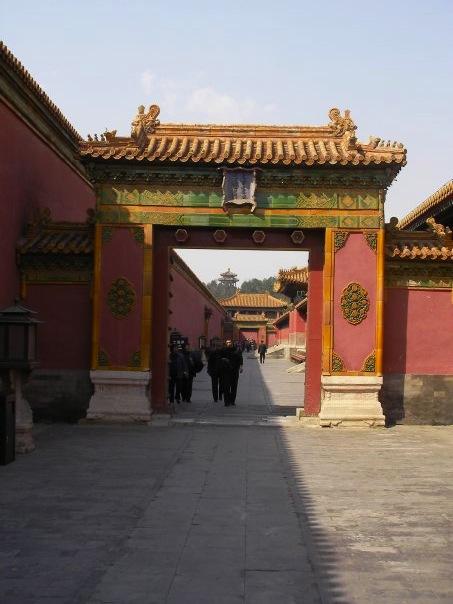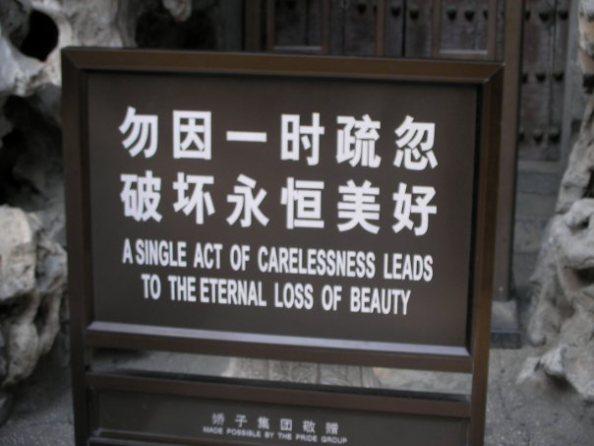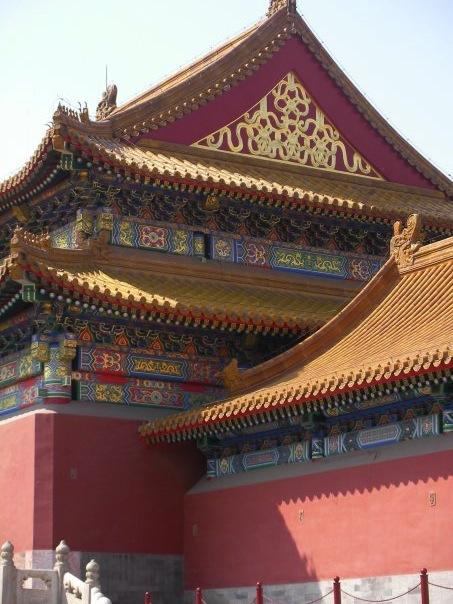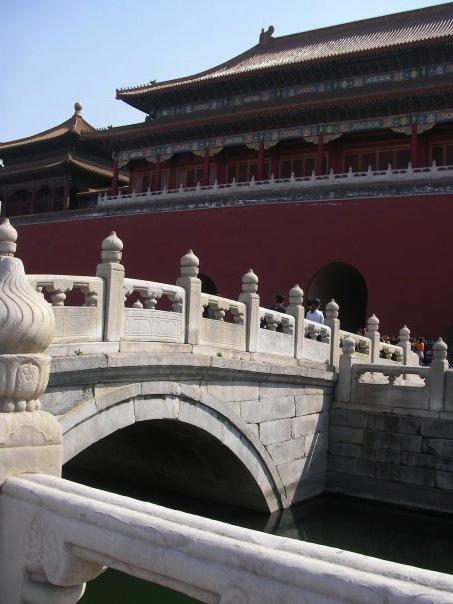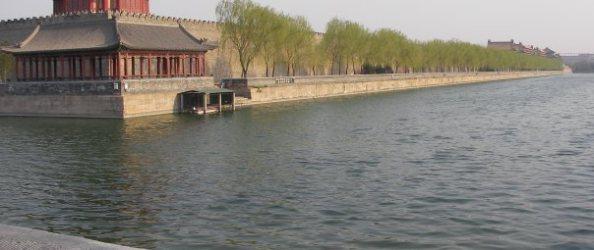
It was several years since I was in Beijing, but the Forbidden City is not a place you forget in a hurry. The scale and beauty of the place is over-awing and since 1925 peasants like myself have been permitted entry.
The Forbidden City is located at the heart of the Beijing and was the imperial palace for twenty-four emperors during the Ming and Qing dynasties. It was built by over 1 million workers from 1406 to 1420 during the reign of Emperor Chengzu in the Ming Dynasty (1368-1644).
It has been run by the Palace Museum since 1925 and contains many artworks, there are lots of rooms set up as they would have been used over some of the past 100s of years. With over 8,700 rooms, the complex consists of 980 buildings and covers 720,000 m2 – there’s no shortage of space. Located just north of Tiananmen Square there is enough history to keep you busy for a lifetime.
While living and traveling in Asia one of my favorite things were the signs and t-shirts you get with English language translations, affectionately known as
Engrish. The sign above was my absolute favorite of all time. It’s not an incorrect translation but is so simple and poetic in comparison to what you the ‘Keep Off’ signs you might find in the UK.
The level of detail you find in the buildings is meticulous and designed to reflect philosophical and religious principles, and above all to symbolise the majesty of Imperial power. Almost all of roof tiles in the Forbidden City are yellow, this is because it’s the color of the Emperor. There are 2 exceptions, one is the fabulously named library, the Pavilion of Literary Profundity which has black tiles because black was associated with water, and thus fire-prevention. The other is the Crown Prince’s residences which have green tiles because green was associated with wood, and thus growth.
The trees inside the Forbidden City are incredibly beautiful and quite unusual, I’m not sure what type they are but they add to the atmosphere of the architecture.
Sadly I lost the majority of my photographs of my trip when my hard drive died, what you see above is what remained on facebook. There is so much to see and there are some magnificent temples and extensive collections. The Forbidden City was declared a World Heritage Site in 1987 by
UNESCO as the “Imperial Palace of the Ming and Qing Dynasties”, due to its significant place in the development of Chinese architecture and culture. It is currently undergoing a sixteen-year restoration project to repair and restore all buildings in the Forbidden City to their pre-1912 state. If you ever get the opportunity to go, just do it.
Location: Beijing, China (you can’t miss it!)
Entry fee: CNY 40

